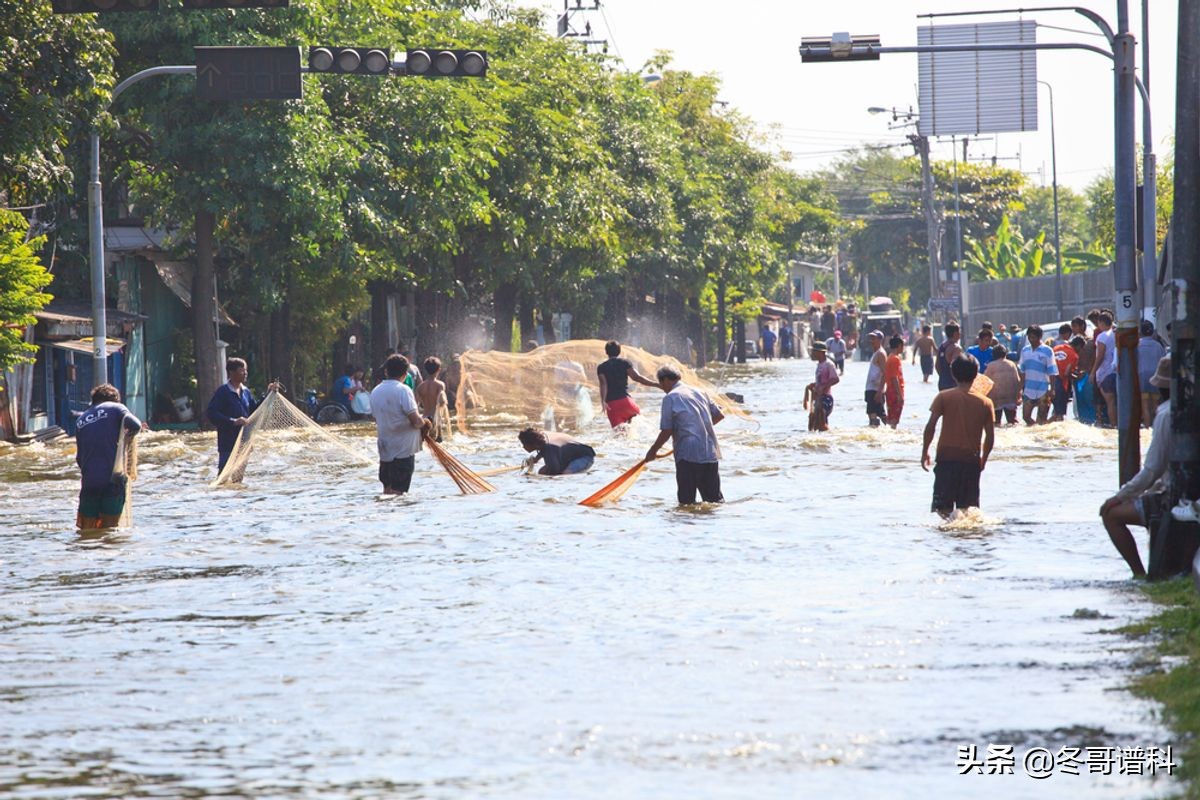
The collapse of the Atlantic Ocean Current conveyor belt could have catastrophic and far-reaching consequences.
Climate change has slowed the conveyor belts of ocean currents that carry warm waters from the tropics to the North Atlantic. The study was published today in the journal Nature Climate Change.
The collapse of this system, known as the Atlantic's warped circulation, would transform Earth's climate into a more La Niña-like state. That would mean more flooding rainfall in eastern Australia and more severe drought and bushfire seasons in the southwestern United States.
Australians on the East Coast know what it's like to be endlessly La Niña. Climate change has filled our atmosphere with moist air, while two years of La Niña warmed the oceans in northern Australia. Both cities contributed to the wettest weather ever recorded, with flooding in New South Wales and Queensland setting record highs.
Meanwhile, record droughts and severe forest fires have put enormous pressure on emergency services and agriculture in southwestern North America, with fires estimated to cost at least $70 billion in 2021 alone.
What is the Atlantic Flip Meridian Circulation?
The Atlantic Upside Down Circulation involves the delivery of large amounts of warm tropical water to the North Atlantic, which helps keep Europe's climate mild while giving the tropics a chance to lose excess heat. In the southern hemisphere, a phenomenon equivalent to the flipping of Antarctic waters can be found.
Climate records from 120,000 years ago show that during the Ice Age, the Atlantic Upside Down Circulation was shut down or significantly slowed down. It opened and eased the European climate during the so-called "interglacial period", the period when the Earth warmed.
Since the beginning of human civilization 5,000 years ago, the overthrow of the Atlantic Ocean has been relatively stable. But a slowdown has been found over the past few decades, which worries scientists.
The main component of the Atlantic Ocean's transtropic inverted circulation. The upper branch (red arrow) flowing northward transports warm, salty water to the North Atlantic and forms the North Atlantic Deep Water (NADW) at high latitudes. The southward flowing NADW is located above the Antarctic Bottom Water (AABW).
Why is it slowing down? One clear consequence of global warming is the melting of the polar ice sheets of Greenland and Antarctica. When these ice sheets melt, they dump large amounts of freshwater into the ocean, making the sea more buoyant and reducing the sinking of high-latitude, high-density seawater.
Around Greenland alone, 5 trillion tons of ice have melted in the past 20 years. This is equivalent to the freshwater value of 10,000 Sydney Harbour. If global warming continues unabated, this rate of melting will increase over the next few decades.
The collapse of the North Atlantic and Antarctic flipped circulations will profoundly alter the structure of the world's oceans. This will make them fresher in deep water, deplete oxygen, and deprive the upper oceans of the upwelling of nutrients provided when they surface from the deep sea. This will have a profound impact on marine ecosystems.
As Greenland's ice has begun to melt, scientists estimate that the Atlantic Ocean's capsizing has been the most vulnerable for at least the past millennium, and could collapse for centuries to come if greenhouse gas emissions are not controlled.
Consequences of a slowdown in ocean currents.
The first thing the model simulations revealed was that if the Atlantic Ocean hadn't flipped, a lot of heat would have accumulated south of the equator.
The excess heat of the tropical Atlantic pushes more warm, moist air into the upper troposphere (about 10 kilometers into the atmosphere), causing dry air to fall over the eastern Pacific.
The falling air then strengthens the trade winds, pushing warm waters toward the Indonesian Sea. This helps to put the tropical Pacific Ocean into a state similar to la Niña.
Australians may consider the La Niña phenomenon to be cool and wet summers. But under the long-term warming trend of climate change, its worst impact will be flooding, especially in the eastern region.
Antarctica will feel the closure of the Atlantic Ocean flipping. Warm air rising over the western Pacific Ocean will trigger a change in wind direction that spreads south to Antarctica. This will deepen the atmospheric low-pressure system over the Amundsen Sea, located in western Antarctica.
This low-pressure system is known to affect the melting of ice sheets and ice shelves, as well as ocean circulation and sea ice ranges as far west as the Ross Sea.
La Niña is known to bring wet weather to Australia, but it can also bring drought and bushfires to the southwestern United States.
New World Order
In Earth's history, with the exception of huge meteorites and supervolcanoes, our climate system has never been affected by changes in atmospheric gas composition as it does today as it does to burn fossil fuels today.
The oceans are the flywheels of Earth's climate, slowing down the rate of change by absorbing large amounts of heat and carbon. But there are also returns, with rising sea levels, melting ice, and a significant slowdown in the Atlantic upside-down circulation expected this century.
We now know that this slowdown will affect not only the North Atlantic region, but also distant Australia and Antarctica.
We can prevent these changes from happening by developing a new low-carbon economy. Doing so will change the course of Earth's climate history for the second time in less than a century, and this time it will be even better.